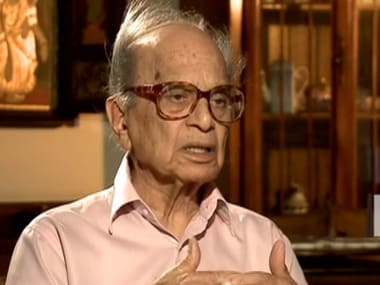Governor's Rule in Jammu and Kashmir: Residents recall Jagmohan Malhotra's 1990 reign with fear, horror
Editor's note: With Jammu and Kashmir under Governor's Rule for the eighth time, Firstpostwill run a series of reported pieces, analytical articles and commentary to track the progress of events.
Srinagar: For 54-year-old Abdul Salam, the recent imposition of Governor’s Rule in Jammu and Kashmir is a grim reminder of a turbulent time: In 1990, Jagmohan Malhotra took over for five months, leaving the people with wounds which are yet to heal.
Salam, a resident of Batamaloo locality in Srinagar, recalled Jagmohan’s first press conference as governor soon after he landed at Srinagar airport.
“Mere haathon se aman ke parche khisak nahi jaane chahiye (I don’t want that the cards of peace should slip away from my hands),” were his words, said Salam, who was in his 30s then. "It was a direct threat to militants and people in Kashmir to not support them," he added.
Militancy at its peak
In 1990, militancy was at its peak in Jammu and Kashmir. Pro-freedom sentiment among people was overwhelming. The state was being ruled by the National Conference (NC) led by then chief minister Farooq Abdullah.
As militants gained public support in the Valley, New Delhi felt Jammu and Kashmir was slipping away from its control. It needed measures to curb the full-blown secessionist movement and public support. When the political and security situation became extremely turbulent, New Delhi, under the stewardship of then prime minister VP Singh, dispatched Malhotra to the state. Late PDP patron Mufti Mohammad Sayeed was then India's home minister.
Abdullah, who opposed Singh’s decision, resigned from the state Assembly. Governor’s Rule was imposed in Jammu and Kashmir yet again. Jagmohan’s first stint in Jammu and Kashmir was from 1984 to 1989. It was, by and large, considered peaceful and efficient. Jagmohan took over the state again on 19 January, 1990, till May that year. He resigned after 127 days of controversy in which he was accused of, among other things, aiding the exodus of the Kashmiri Pandits to Jammu and other states.
People recall the horror
"The first impression among people of Jagmohan’s arrival to Kashmir in January 1990 was of fear and horror," said Bashir Ahmad, a resident of Sopore in north Kashmir. "Jagmohan was seen by residents through the prism of the 1976 Turkman Gate massacre in Delhi where local residents protesting the demolition of a Muslim colony in the city were killed.”
Jagmohan, then the vice-chairman of the Delhi Development Authority, reportedly told a group of residents pleading for resettlement, “Do you think we are mad to destroy one Pakistan to create another Pakistan?”
In Jammu and Kashmir, Jagmohan’s second stint in power is remembered as being synonymous with repression, “hate” and “massacres”. “He created hatred against himself among the masses and gave a very bad impression of Governor’s Rule in Jammu and Kashmir. He gave the security forces a free hand to deal with militants and the people,” Ahmad alleged.
Hamidullah Ahmad of south Kashmir’s Anantnag also has bitter memories of the time. “Those were the years of brutality, massacres, lawlessness, prolonged curfews and large pro-freedom processions. Administration and governance were completely overshadowed by the oppression unleashed by Jagmohan,” he recalled.
Two days after Jagmohan took over, the state witnessed the Gaw Kadal massacre in which 50 to 55 people participating in protests against the governor and the central government were killed. Days later, on 25 January, 1990, 21 civilians were killed by the Border Security Force (BSF) in Handwara.



No comments:
Post a Comment